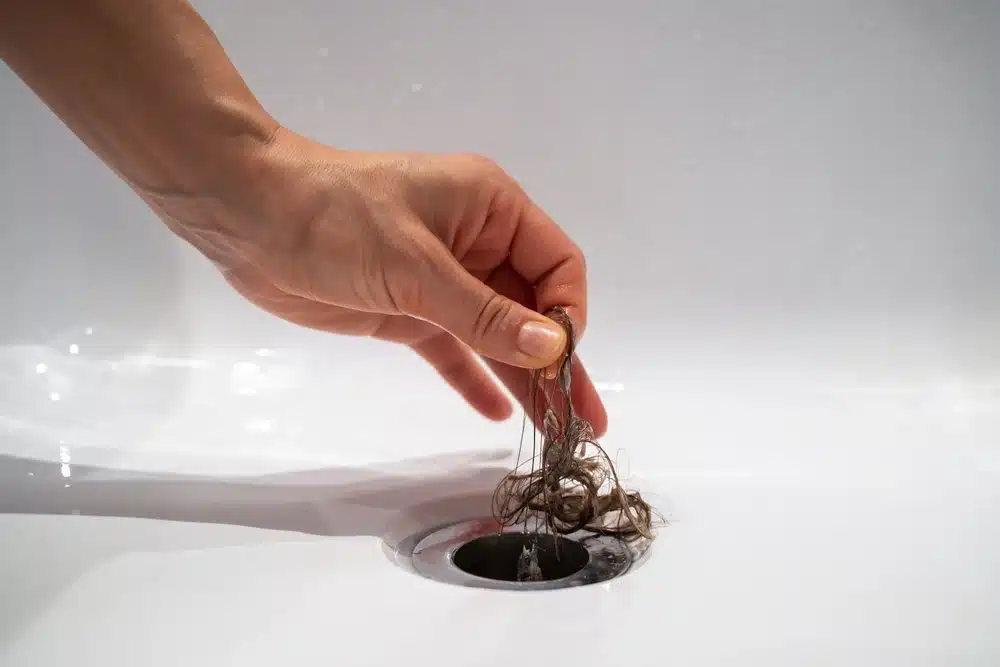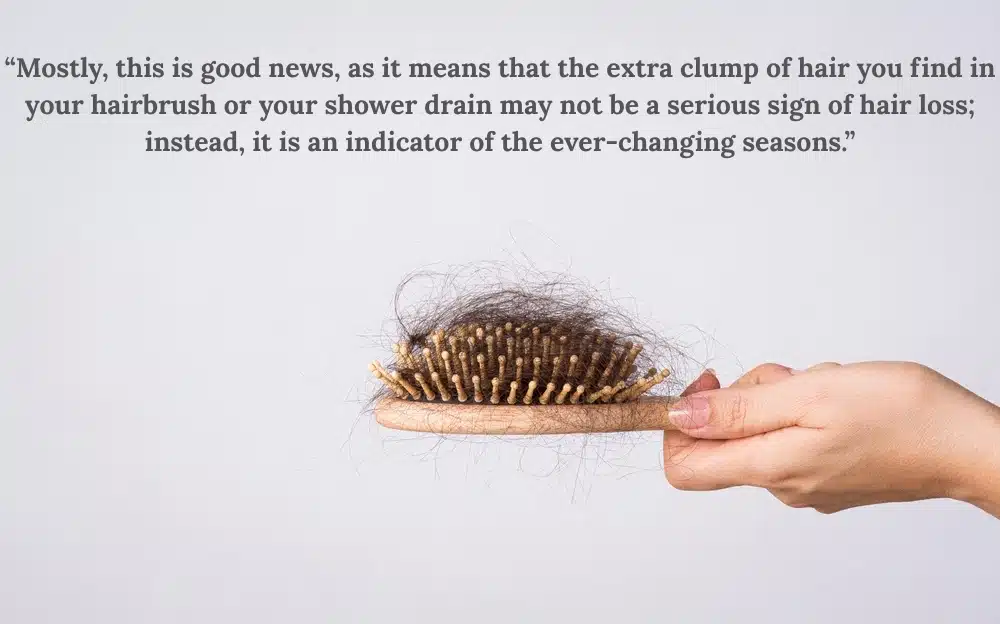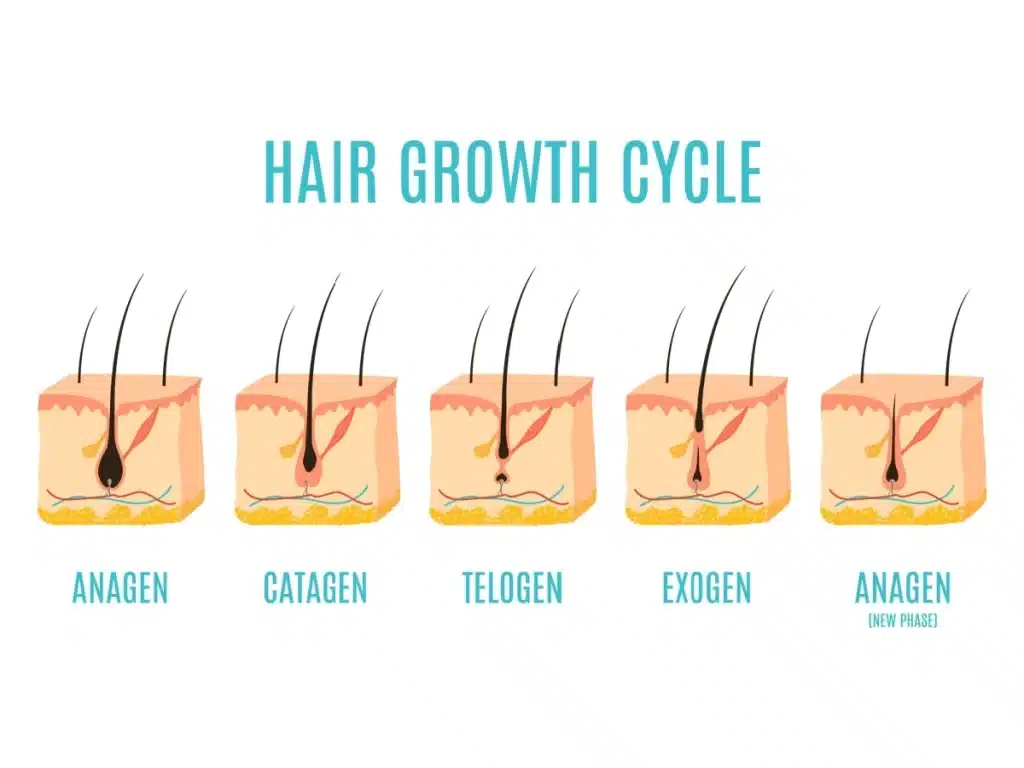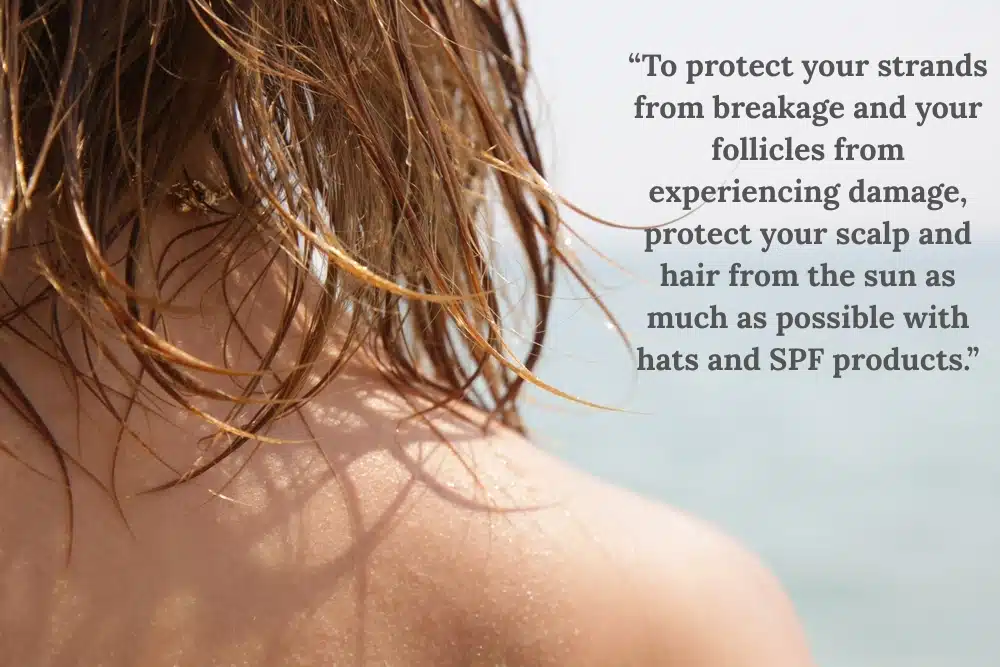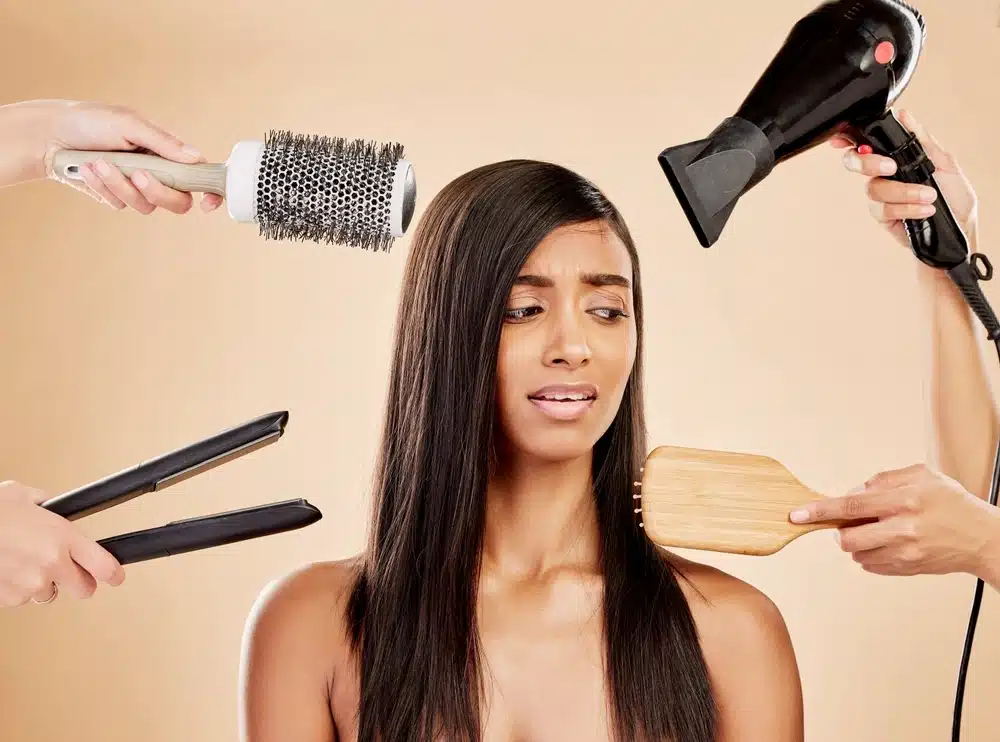When you think of seasonal hair shedding, you might think of your dog or cat molting in the spring or autumn, causing clumps of hair to appear on your furniture. It’s not just our beloved pets who go through this, though – seasonal hair loss can also happen to people and is actually quite common.
Mostly, this is good news, as it means that the extra clump of hair you find in your hairbrush or your shower drain may not be a serious sign of hair loss; instead, it is an indicator of the ever-changing seasons.
So, what exactly is seasonal hair loss – what causes it, what are the symptoms, and can you treat it? Keep reading to learn more!
What is Seasonal Hair Loss?
Seasonal hair loss, or seasonal hair shedding, is when the hair starts falling out more during specific times of year, typically in the spring or the autumn. It usually lasts a couple of weeks (or perhaps months).
What Causes Seasonal Hair Loss?
Nobody knows with certainty what causes seasonal hair loss, but several theories exist.
- Hormonal Fluctuations: A change in the seasons means fewer or more daylight hours, which may impact hormone levels. Hormones often have a direct impact on hair health and growth, which could be the primary cause of seasonal hair loss.
- Increase in Sun Exposure: Some theorise that the increase in sun exposure during the spring and summer months may contribute to hair loss, as the UV rays may damage the follicles during this time.
- Nutritional Deficiencies: People often change their diets throughout the year, eating fresher foods like tomatoes and berries in the summer and stodgier, more wholesome meals in the winter. Dietary changes may lead to a nutritional deficiency, which in turn can cause hair loss.
- Stress: Specific times of year can be stressful, which can contribute to seasonal hair loss in women and men. If someone has an especially busy spring, for example, it may cause more stress in their life, and they may experience hair loss during this time.
Understanding the Hair Growth Cycle
One of the ways seasons may affect hair fallout is by impacting the hair growth cycle.
The hair growth cycle consists of four distinct phases:
The Anagen Phase: This is the phase during which the hair is actively growing. The hairs actively grow out of the hair follicles, causing those strands to become longer. This stage lasts anywhere between two and seven years – an individual’s genetics determines the exact time. The growth rate is also dependent on genetics, but most people grow around half an inch of hair per month.
The Catagen Phase: The catagen phase directly follows the anagen phase, and is also known as the transition period. At this point, the follicles shrink and prepare to rest. It lasts around one to three weeks, and only 1-3% of your hair is in the catagen phase at any one time. [1]
The Telogen Phase: This is the resting phase, during which the hair follicles are inactive, meaning they are not actively growing any hairs. Approximately 10-15% of the hair on your head is in the telogen phase at any given time, and this phase typically lasts around 3-4 months.
The Exogen Phase: Also known as the shedding phase. Sometimes, this phase is tied to the telogen phase, but it’s different enough to warrant separation. Whereas the telogen phase is when the hair follicles rest, the exogen phase is when the follicles actively shed the hairs.
These hairs often become lost during typical activities, such as brushing or washing your hair, or even just rolling around in your sleep (you may notice hairs on your pillow). Your hair is in a continuous cycle of these four phases – only a small percentage of your hair will be in the exogen phase at one time, leading to you losing about 50-100 hairs per day on average.
Does Seasonal Hair Loss Grow Back?
Yes – seasonal hair loss does grow back!
Seasonal hair loss is not considered a serious or permanent type of hair loss. It’s a part of the natural cycle of your hair. The follicles are not permanently damaged, and they will continue to grow new hairs after the shedding process is complete.
How Long Does Seasonal Hair Shedding Last?
It varies for everyone, but seasonal hair loss typically lasts anywhere from a couple of weeks to a few months.
Most people notice the most hair shedding in the autumn from September to November, although it can also happen in the springtime. After November, the hair shedding tends to return to normal.
The Symptoms of Seasonal Hair Loss
Some people do not even notice seasonal hair loss. However, there are some signs to watch for.
- More Hair in Your Brush: Everyone sheds hair over time, which is why hairs accumulate on brushes. One clear sign of seasonal hair loss is finding even more hairs on your brush. You might realise you need to clear your brush more regularly during this time.
- Finding Hairs in the Shower Drain: Do you discover that your shower drain becomes more clogged in the autumn? That’s likely because of seasonal hair loss! The only real issue here is that the hair accumulates and causes the water to start pooling; however, this can be resolved by clearing out the drain.
- Hair on Your Pillow, Furniture, and Clothing: If your hair is shedding, you are likely to find it on any surface your head touches, such as your clothing, pillow, and furniture.
- Noticeable Thinning: Seasonal hair thinning may become noticeable when running your fingers through your strands or simply looking in the mirror. You may notice a slightly wider parting or hair that feels less dense.
- Thinning Hair that Grows Back: Thinning hair that sheds during the spring or autumn and then grows back after a few weeks or months is likely due to seasonal hair loss.
If you want to track hair loss and growth, a hair track app will come in handy!
Preventing Seasonal Hair Loss
While seasonal hair loss is normal, most people don’t want to deal with thinning hair during that time. Most people will jump to a hair loss treatment, but there are several other ways to prevent the issue.
Eat a Balanced Diet
Healthy hair growth and a balanced diet are closely linked. To avoid this seasonal type of hair loss, be sure to eat a nutritionally rich diet full of proteins, vitamins, and minerals. In particular, focus on getting enough iron, zinc, biotin, vitamin D, and vitamin B3. If you’re worried a nutritional deficiency is causing hair shedding, get a blood test from your GP.
Be Gentle With Your Strands
Constantly tugging and styling your hair can exacerbate hair shedding. So, during certain times of the year, be extra careful. Avoid excessive heat styling and opt for heatless hairstyles whenever possible. Always use a heat protectant when you need to use heat styling tools. Try loose, protective hairstyles, and brush your hair slowly. All of this will make a difference in how much hair you shed.
Look After Your Scalp
To look after your strands, you must take care of your scalp. One of the best things you can do to stimulate hair growth and prevent shedding is to perform a scalp massage on yourself (or, if you’re feeling like treating yourself, get a professional scalp massage). Doing this stimulates blood flow to the scalp and ensures the hair follicles receive all the nutrients they need to grow healthy hair.
Manage Stress
Stress is a major contributor to hair loss. Telogen effluvium is a type of hair loss that is triggered by stress and can occur seasonally. To avoid this, manage your stress levels as much as you can. Stress-relieving habits, such as meditation, exercise, and yoga, can be beneficial. If your stress levels are chronic or excessive, speak to a doctor.
Protect from the Sun
The sun may contribute to seasonal hair loss in the spring. To protect your strands from breakage and your follicles from experiencing damage, protect your scalp and hair from the sun as much as possible with hats and SPF products.
When Seasonal Hair Loss is More Serious
If you notice excessive hair loss during particular seasons, that might be a sign of something more serious. You may have a nutritional deficiency, a hormonal imbalance, or another health condition causing the issue. If you notice excessive hair loss, it is always best to consult a medical professional.
If seasonal changes do not cause your hair loss and is more permanent, there are treatments available, from medications like minoxidil to permanent solutions like a hair transplant.
Can Hair Loss Be Seasonal? Final Thoughts
The changing seasons leading to hair loss are typically not something to stress over. There are several normal reasons this happens, and the chances are that the hair will grow back and return to normal as the months pass.
If you’re worried about hair loss, though, you should speak to a professional. At Harley Street Clinic, we are experts in hair loss, providing permanent hair restoration solutions to our clients. Check out what we do at our patients gallery.
Sources:
- https://www.healthline.com/health/stages-of-hair-growth#transition-phase
